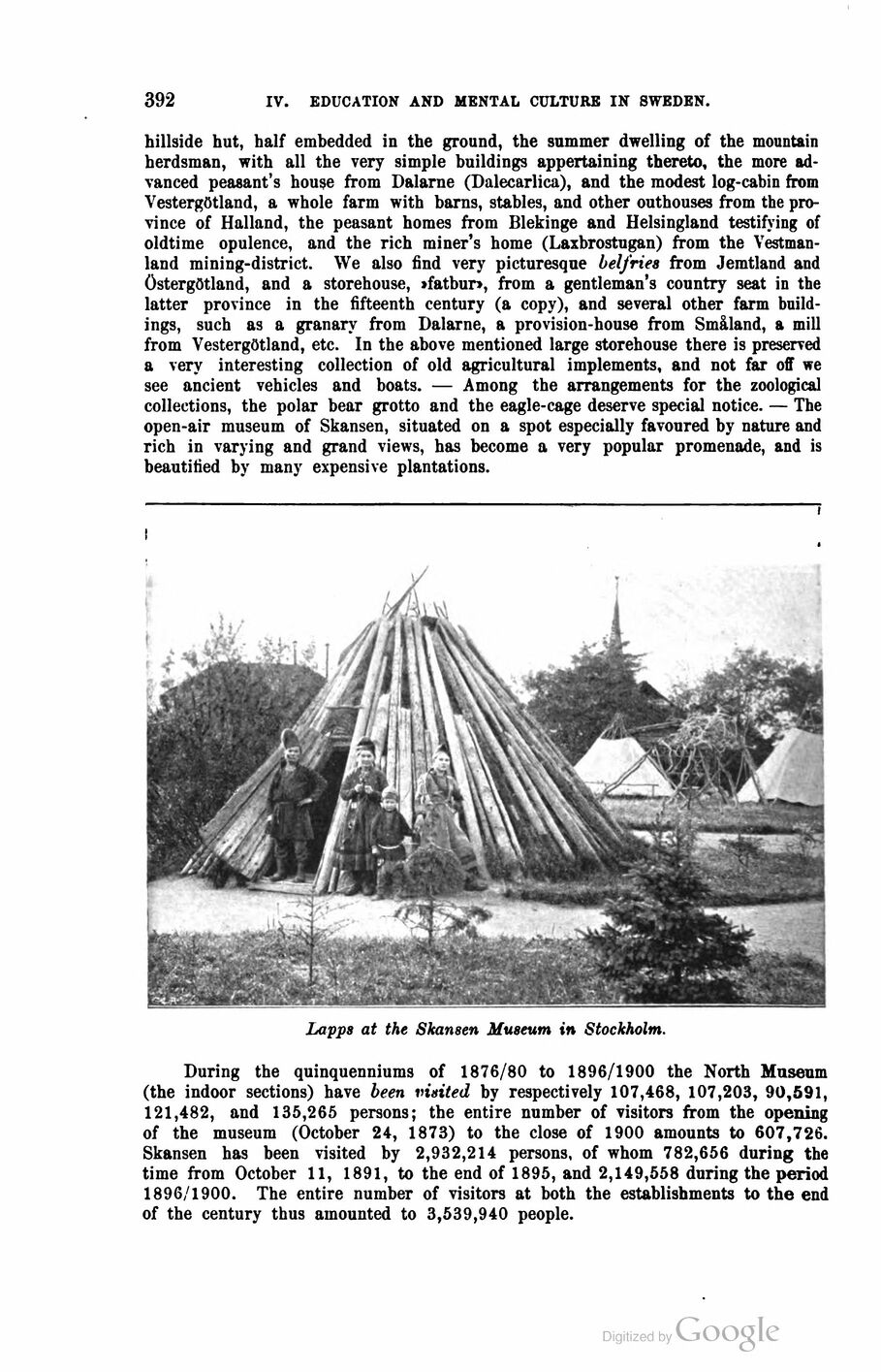
Full resolution (JPEG) - On this page / på denna sida - First part - IV. Education and Mental Culture - 7. Public Collections and Institutions for Science and Art. Periodical Literature. By B. Lundstedt, Ph. D., Librarian at the Royal Library, Stockholm - The North Museum and Skansen, by N. E. Hammarstedt, Amanuensis, North Museum, Stockholm

<< prev. page << föreg. sida << >> nästa sida >> next page >>
Below is the raw OCR text
from the above scanned image.
Do you see an error? Proofread the page now!
Här nedan syns maskintolkade texten från faksimilbilden ovan.
Ser du något fel? Korrekturläs sidan nu!
This page has never been proofread. / Denna sida har aldrig korrekturlästs.
392
IV. EDUCATION AND MENTAL CULTURE IN SWEDEN.
hillside hut, half embedded in the ground, the summer dwelling of the mountain
herdsman, with all the very simple buildings appertaining thereto, the more
advanced peasant’s house from Dalarne (Dalecarlica), and the modest log-cabin from
Vestergötland, a whole farm with barns, stables, and other outhouses from the
province of Halland, the peasant homes from Blekinge and Helsingland testifying of
oldtime opulence, and the rich miner’s home (Laxbrostugan) from the
Vestmanland mining-district. We also find very picturesque belfries from Jemtland and
Östergötland, and a storehouse, »fatbur», from a gentleman’s country seat in the
latter province in the fifteenth century (a copy), and several other farm
buildings, such as a granary from Dalarne, a provision-house from Småland, a mill
from Vestergötland, etc. In the above mentioned large storehouse there is preserved
a very interesting collection of old agricultural implements, and not far off we
see ancient vehicles and boats. — Among the arrangements for the zoological
collections, the polar bear grotto and the eagle-cage deserve special notice. — The
open-air museum of Skansen, situated on a spot especially favoured by nature and
rich in varying and grand views, has become a very popular promenade, and is
beautified by many expensive plantations.
Lapps at the Skansen Museum in Stockholm.
During the quinquenniums of 1876/80 to 1896/1900 the North Museum
(the indoor sections) have been visited by respectively 107,468, 107,203, 90,591,
121,482, and 135,265 persons; the entire number of visitors from the opening
of the museum (October 24, 1873) to the close of 1900 amounts to 607,726.
Skansen has been visited by 2,932,214 persons, of whom 782,656 during the
time from October 11, 1891, to the end of 1895, and 2,149,558 during the period
1896/1900. The entire number of visitors at both the establishments to the end
of the century thus amounted to 3,539,940 people.
<< prev. page << föreg. sida << >> nästa sida >> next page >>